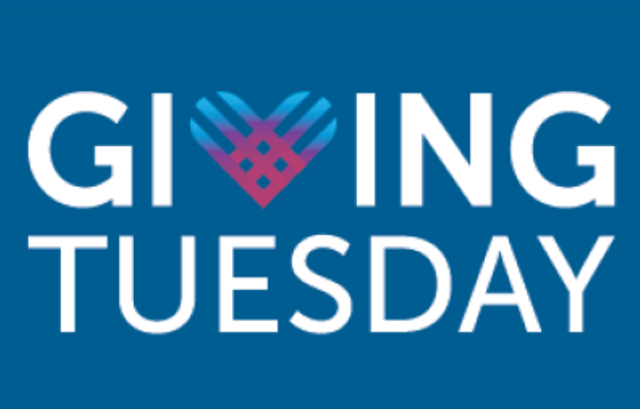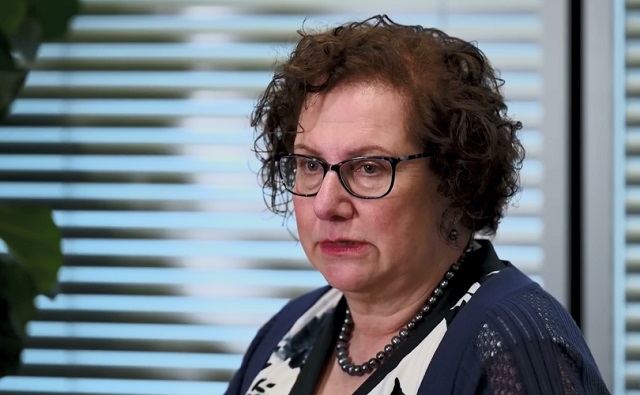Community
Giving Hope on Giving Tuesday

From Kaelyn Gillard, Communications | NOVA Chemicals Corporation
I’d excited to share an announcement from NOVA Chemicals’ Senior Vice President, Human Resources & Communications, Mona Jasinski outlining how NOVA is participating in Giving Tuesday in support of mental health.
Over the coming weeks we will be highlighting these organizations and the great work they’re doing on our social media channels and internally with our employees.
—
Today, I heard about an interaction between two employees in our office that made me think about how simple actions can make a difference.
“Mia” asked “Robert” how it was going as they passed in the hall. His glib ‘honestly just trying to make it through’ struck her, so after finishing with her colleagues she circled back to check in on how Robert was really doing. She then took that a step further, offered a supportive ear and proposed a lunchtime walk break to check in. Fortunately, in this case Robert wasn’t facing anything dire and was putting unnecessary added stress upon himself – but he felt better after talking about it.
We don’t have to look far, however, to find harsh statistics surrounding the true state of mental well-being across North America, and we know it’s declined even further over the past few years.
The National Alliance on Mental Illness (NAMI) in the U.S. reports that one in five adults experience mental illness each year, and one in six youth aged 6-17 experience a mental health disorder each year. Similarly in Canada, in a given year 6.7 million Canadians – or one in five people – experience mental illness, and by age 40, that number increases to one in two.
When it comes to our youth, according to Youth Mental Health Canada (YMHC), there are approximately 1.2 million children and young people affected by mental illness in Canada alone, and around 20% of young people will develop a mental illness before they turn 25. However, less than 20% of them receive the right treatment. That’s staggering.
At NOVA Chemicals, we believe that positive mental health is essential for our overall well-being. I’m proud of the resources we make available to our employees supporting their total well-being, and hope our people take advantage of them all. We know, however, that not everyone has ready access to the resources they need.
That’s why this year, we’ve chosen mental health as our focus on #GivingTuesday, and are donating almost US$500,000 toward a series of agencies providing mental health supports to youth and adults in the regions where we work, live and play. Having the right resources available in the moment that you need them has never been more important, and we at NOVA want to be sure crucial programs remain strong and sustainable, available to continue their work providing vital, life-saving care – and hope – for our neighbours.

I invite you to follow us on social media over the next few weeks as we shine a light on each of the recipient organizations and the tremendous work they are doing every day.
There’s no question the decline in society’s mental well-being impacts us all. My hope for each of us – from friends, family and colleagues to neighbours and strangers across our communities alike, young and more seasoned and everywhere in between – is that when we need help, there’s a resource there to support us.
We can all play a role. It doesn’t have to be complicated, and can start with simply reaching out to those around us. Think like Mia did. She doesn’t have any particular expertise and she and Robert are work acquaintances – not teammates nor even on a project together. It doesn’t matter. She paid attention, reached out, and showed kindness. One small action can make a difference.
Community
Last Day: What would you do with $20,000 Early Bird Prize?

|
|
|
|
|
|
Addictions
‘Harm Reduction’ is killing B.C.’s addicts. There’s got to be a better way

From the Frontier Centre for Public Policy
B.C. recently decriminalized the possession of small amounts of illicit drugs. The resulting explosion of addicts using drugs in public spaces, including parks and playgrounds, recently led the province’s NDP government to attempt to backtrack on this policy
Fuelled by the deadly manufactured opioid fentanyl, Canada’s national drug overdose rate stood at 19.3 people per 100,000 in 2022, a shockingly high number when compared to the European Union’s rate of just 1.8. But national statistics hide considerable geographic variation. British Columbia and Alberta together account for only a quarter of Canada’s population yet nearly half of all opioid deaths. B.C.’s 2022 death rate of 45.2/100,000 is more than double the national average, with Alberta close behind at 33.3/100,00.
In response to the drug crisis, Canada’s two western-most provinces have taken markedly divergent approaches, and in doing so have created a natural experiment with national implications.
B.C. has emphasized harm reduction, which seeks to eliminate the damaging effects of illicit drugs without actually removing them from the equation. The strategy focuses on creating access to clean drugs and includes such measures as “safe” injection sites, needle exchange programs, crack-pipe giveaways and even drug-dispensing vending machines. The approach goes so far as to distribute drugs like heroin and cocaine free of charge in the hope addicts will no longer be tempted by potentially tainted street drugs and may eventually seek help.
But safe-supply policies create many unexpected consequences. A National Post investigation found, for example, that government-supplied hydromorphone pills handed out to addicts in Vancouver are often re-sold on the street to other addicts. The sellers then use the money to purchase a street drug that provides a better high — namely, fentanyl.
Doubling down on safe supply, B.C. recently decriminalized the possession of small amounts of illicit drugs. The resulting explosion of addicts using drugs in public spaces, including parks and playgrounds, recently led the province’s NDP government to attempt to backtrack on this policy — though for now that effort has been stymied by the courts.
According to Vancouver city councillor Brian Montague, “The stats tell us that harm reduction isn’t working.” In an interview, he calls decriminalization “a disaster” and proposes a policy shift that recognizes the connection between mental illness and addiction. The province, he says, needs “massive numbers of beds in treatment facilities that deal with both addictions and long-term mental health problems (plus) access to free counselling and housing.”
In fact, Montague’s wish is coming true — one province east, in Alberta. Since the United Conservative Party was elected in 2019, Alberta has been transforming its drug addiction policy away from harm reduction and towards publicly-funded treatment and recovery efforts.
Instead of offering safe-injection sites and free drugs, Alberta is building a network of 10 therapeutic communities across the province where patients can stay for up to a year, receiving therapy and medical treatment and developing skills that will enable them to build a life outside the drug culture. All for free. The province’s first two new recovery centres opened last year in Lethbridge and Red Deer. There are currently over 29,000 addiction treatment spaces in the province.
This treatment-based strategy is in large part the work of Marshall Smith, current chief of staff to Alberta’s premier and a former addict himself, whose life story is a testament to the importance of treatment and recovery.
The sharply contrasting policies of B.C. and Alberta allow a comparison of what works and what doesn’t. A first, tentative report card on this natural experiment was produced last year in a study from Stanford University’s network on addiction policy (SNAP). Noting “a lack of policy innovation in B.C.,” where harm reduction has become the dominant policy approach, the report argues that in fact “Alberta is currently experiencing a reduction in key addiction-related harms.” But it concludes that “Canada overall, and B.C. in particular, is not yet showing the progress that the public and those impacted by drug addiction deserve.”
The report is admittedly an early analysis of these two contrasting approaches. Most of Alberta’s recovery homes are still under construction, and B.C.’s decriminalization policy is only a year old. And since the report was published, opioid death rates have inched higher in both provinces.
Still, the early returns do seem to favour Alberta’s approach. That should be regarded as good news. Society certainly has an obligation to try to help drug users. But that duty must involve more than offering addicts free drugs. Addicted people need treatment so they can kick their potentially deadly habit and go on to live healthy, meaningful lives. Dignity comes from a life of purpose and self-control, not a government-funded fix.
Susan Martinuk is a senior fellow at the Frontier Centre for Public Policy and author of the 2021 book Patients at Risk: Exposing Canada’s Health Care Crisis. A longer version of this article recently appeared at C2CJournal.ca.
-

 Automotive2 days ago
Automotive2 days agoGovernments in Canada accelerate EV ‘investments’ as automakers reverse course
-

 conflict1 day ago
conflict1 day agoWhite House Reportedly Worried About Russia’s Sudden Momentum Months After Biden Declared Putin ‘Already Lost’ War
-

 Health1 day ago
Health1 day agoSouth Korean president declares low birth rate a ‘national emergency,’ plans new ministry to address it
-

 Economy2 days ago
Economy2 days agoBiden signs suicidal ‘No Coal’ pact, while rest of world builds 1,000 new plants
-

 Crime1 day ago
Crime1 day agoSlovakian prime minister who opposed WHO Pandemic Treaty shot in assassination attempt
-

 Alberta1 day ago
Alberta1 day agoFortis et Liber: Alberta’s Future in the Canadian Federation
-

 Health1 day ago
Health1 day agoUK pediatrician who led review of child ‘transitions’ says US medical groups ‘misleading the public’
-

 COVID-1915 hours ago
COVID-1915 hours agoNIH Quietly Altered Definition For Gain-Of-Function Research On Its Website, Former Fauci Aide Confirms









